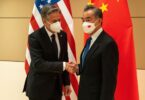Over the past five decades successive governments neglected formulation and implementation of major crops focused agriculture policy and relied mostly on announcing faulty kissing packages which did not produce the intended results. The share of agriculture has decreased from 53 percent to 19 percent in the gross domestic product yet it is the top contributory sector of the economy.
The crisis in the agriculture sector has worsened. It grew by o.85 percent last year as major crops posted a negative growth of 4.43 percent. Wheat production has decreased by 0.5 percent to 29 million metric tonnes last year. Cotton production has dropped to 10.2 million bales against the set target of 15 million bales. Sugarcane production is stagnant and may fall as sugar mills have stopped buying it from farmers on the government fixed price of over Rs.200 per 40 kilogram and have suspended crushing activities in their mills. Neither in the Kissan Package of Rs.342 billion announces by previous PML-N government in May 2016 nor the agriculture emergency programme of Rs.309 billion of the present government include a reasonable minimum support price for wheat, rice and cotton. Quite recently, ECC has approved minimum support price of Rs.1365 per 50 kilogram for wheat whereas the total input cost stand at Rs.1350 for the same weight. How can small farmers grow more wheat although the decrease in the production of this commodity will confront the country with the challenge of food insecurity? The belated decision of emergency wheat import of 300000 tonnes is an eye-opener for the political decision makers. The second major food crop is rice which figures nowhere in minimum support price strategy of the government. Major crops focused long term agriculture policy is the need of the hour, if the political leadership has the will to do so.






